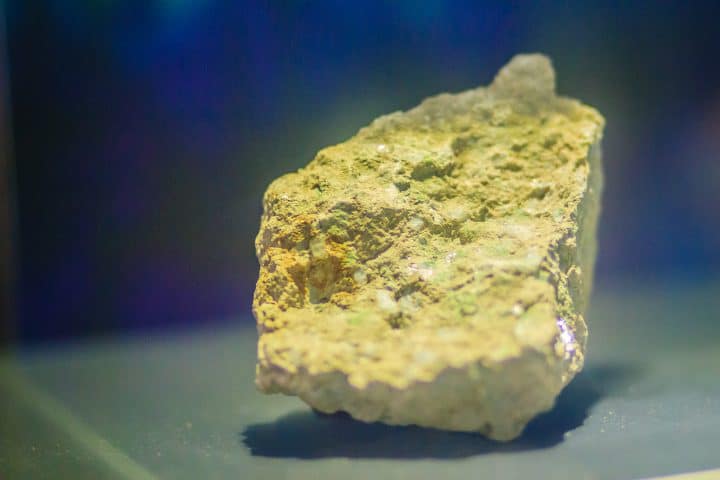This article delves into the much-debated question of whether nuclear energy is renewable or nonrenewable. We’ll weigh up both sides of the argument to help you better understand the differences in opinion that exist today.
First, let’s define what a ‘renewable resource’ actually is. We can use the term to describe a natural resource that is not depleted when used. This definition is compatible with many clean energy sources including solar, wind, geothermal, hydro, and some forms of biomass.
So, What About Nuclear Energy? Is it Renewable?
The answer here is no. This is because of the resources nuclear energy uses to generate power. But there are a few caveats explaining why some people consider it renewable (more on this later).
All commercial nuclear reactors use a process known as nuclear fission to generate power. Here, neutrons are fired at atoms in order to split them in two. This process releases energy which is used to heat water, creating the necessary steam to drive a turbine and generate power.
Most reactors use atoms of uranium as their fuel source. This is a naturally occurring metallic element with a silvery grey appearance. It can be found in low concentrations in almost all rock, soil, and seawater but has to be enriched for use in commercial reactors.

Because uranium is a naturally occurring resource, it is not considered renewable. Although not a fossil fuel, it has the same characteristics as coal, oil, and natural gas in that it is a finite resource. Once we have used it, there will be no more of it. Because of this, we should consider nuclear energy as nonrenewable.
Why Some People Believe It’s Renewable
The confusion over whether nuclear is renewable or nonrenewable stems from a lack of agreement on what renewable resources actually are.
Some people consider renewable resources to be those that can be controlled to avoid the risk of them becoming depleted. But this isn’t necessarily correct. Renewable means something can be renewed – not managed in a way to improve its sustainability.
Prime examples of renewable resources include the following:
- Solar Energy – The sun is a continuous source of energy that is not depleted as we use it. Although it will one day burn itself out, the sun will be a renewable form of energy for as long as life is supported on earth.
- Wind Energy – The wind is almost guaranteed and although it doesn’t blow all the time, it will keep coming and going.
- Geothermal Energy – Geothermal resources are derived from the earth’s core. Again, this is a continuous source of energy that will keep renewing itself whilst life is supported on earth.
- Hydro Energy – This uses the kinetic energy of flowing water to generate electricity. It doesn’t consume water and therefore is completely renewable.
Looking at the above, we can clearly see how nuclear energy simply doesn’t fit into the equation.
Thos who believe nuclear is renewable can be forgiven as there are several reasons why nuclear energy is far more sustainable than other forms of nonrenewable energy sources. More on this in the following section.
How Sustainable is Nuclear Energy?
So, we’ve established that nuclear energy is nonrenewable, but it can still offer some hope of a more sustainable future.
Whilst reserves of coal, oil and natural gas are still readily available, they are running out just like uranium is. The problem with these traditional energy sources is that we use so much of them. Here, nuclear energy has two key benefits in that resources such as uranium are arguably more abundant and have a much higher energy density.
Abundance
Traces of uranium occur almost everywhere. Although most of these are not high enough to be used for commercial purposes, it is still very abundant.
Nuclear fuel such as uranium has the added benefit in that it has a much longer lifespan than fossil fuel resources. Coal, oil, and gas-fired power plants use the energy from such resources almost immediately as they are burnt. Uranium on the other hand can last up to 5 years or more inside a nuclear reactor before it becomes depleted. Even then, some of it can be recycled into new fuel rods to help further its lifespan.
All of this results in a natural resource that is far more sustainable than coal, oil and natural gas.
Energy Density
High energy density is one of the main advantages of nuclear energy. The Nuclear Energy Institute estimates that a single uranium fuel pellet (the size of your fingertip) has as much energy as 1 ton of coal, 149 gallons of oil, and 17,000 cubic feet of natural gas.
You can see from the above figures how much more sustainable nuclear fuel actually is. Combine this with the fact it is much more abundant and has a longer lifespan than fossil fuels, you can see how there is an ‘almost’ endless supply of nuclear fuel that could last well into the future.
Summary
To sum up, whilst nuclear energy should be considered a nonrenewable resource, it is still much more sustainable than traditional alternatives such as coal, oil, and natural gas.